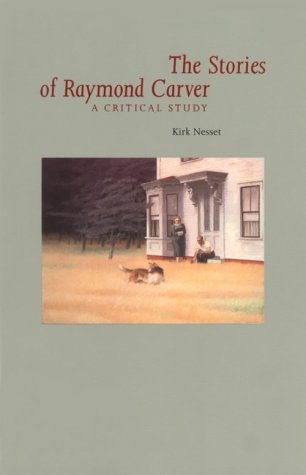

This traditional presentation is justified by Runyon's intention to study the sequence itself, the book and notjust the separate stories. Each story is studied sequentially in the order in which it appeared in book form. It is arranged chronologically, in the order the collections were published, and concludes with his last seven stories. Reading Raymond Carver is a study of Carver's collections of short stories though it casts a final glance at a few poems in Ultramarine. Syracuse: Syracuse University Press, 1992, $24.95. Reviews141 ReadingRaymond Carver, by Randolph Paul Runyon xviii & 246 pp. For now, the important thing is the moment, and both the complexity and the simplicity of his experience.In lieu of an abstract, here is a brief excerpt of the content: We don't know if the feeling will last, if he'll continue his relationship with Robert, if his relationship with his wife will improve, etc.

Now that narrator has experienced seeing without his eyes, he feels free. Conclusion The narrator keeps his eyes closed. By closing his eyes, at Robert's insistence, the narrator admits that being able to see might actually be limiting his experience. But, it's unusual – it deeply challenges her ideas about what Robert and her husband would do if they were left to their own devices. When the narrator's wife wakes up and sees Robert and the narrator drawing the cathedral, she can't process what she sees. The dénouement stresses the deficiencies of eyesight. Will Robert and the narrator find a way to connect? And most importantly, will the narrator find a way to describe a cathedral to Robert? Denouement The narrator's wife wakes up the narrator closes his eyes. The narrator's wife falls asleep, leaving the narrator and Robert alone. The combination of warmth and discomfort contributes to the sense that something is going on which is bigger than it appears. The connection is rather fraught because of the loneliness and dissatisfaction and personal issues each of the characters is experiencing. In "Cathedral," as the characters connect through what some might call hedonistic, or indulgent activities. Climax Either the dinner, the drinks, or "two fat numbers."Īctually, we could say that all three make up the climax of "Cathedral." The climax is the stage of the story where the characters emotions are at a high level. Because they all have baggage, and linked histories, the situation feels complicated. The complication is the simple fact that three people are hoping to get along and have a good evening. The woman is sure that every word the narrator says is a veiled blind joke, even though he's actually being nice to Robert. The narrator isn't sure what to say to Robert. When Robert arrives, things are a little awkward. That's the conflict, and that's maybe also part of why the narrator has issues with blind people. It's obvious that the narrator is jealous of Robert.

We learn that the blind man, Robert, and the narrator's wife have been corresponding for the past ten years, revealing to each other the most intimate details of their respective lives. Conflict The blind man has a history with the narrator's wife. In any case, he isn't looking forward to this blind man, Robert, his wife's "old friend," coming to visit (1.1). The narrator has issues with blind people. Initial Situation A blind man is coming to spend the night at the narrator's house.


 0 kommentar(er)
0 kommentar(er)
